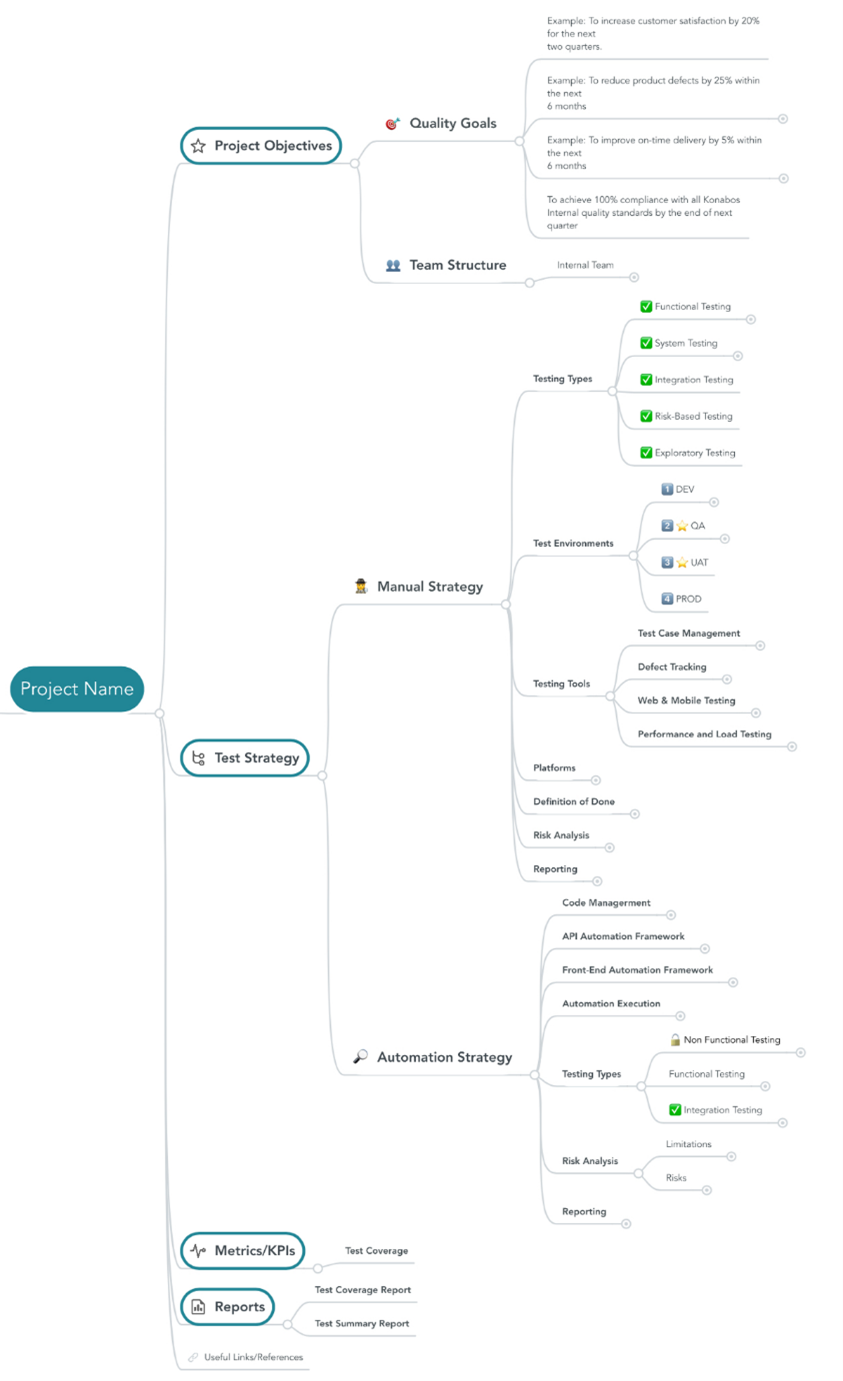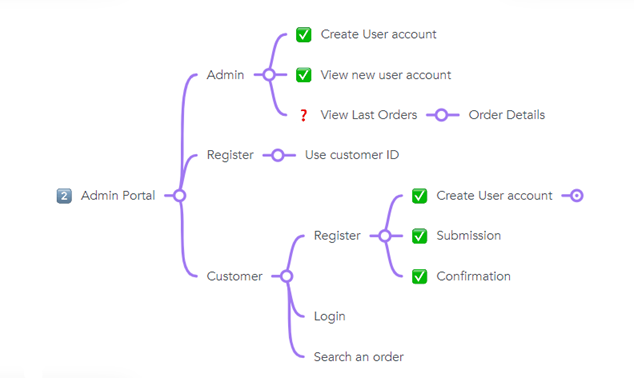Unlocking the Power of Mind Maps: Enhancing Testing Efficiency
Brittany Stewart - Senior QA Specialist
20 Sep 2023
As a Senior QA (Quality Assurance) Specialist at Konabos, I have had the opportunity to engage in a diverse range of projects over the past 8 months. Within our team, we deeply comprehend and value the importance of both a high-performing QA process and the overall development process.
Earlier this year our internal QA team embarked on a mission to establish a structured and efficient testing process for the organization. If you have recently joined as a QA specialist for client projects, you might have encountered the challenge of thoroughly testing various functionalities, ensuring comprehensive test coverage, and sharing test progress. In my experience, one powerful tool that can successfully address this challenge is the utilization of mind maps.
In this blog post, I share some of the ways that mind maps helped strengthened our testing process, from test scenario generation and test case design to test data management and coverage analysis.
What are Mind Maps?
Mind maps are visual tools that structure and organize information in a hierarchical structure. They are often used for brainstorming, note-taking, and project planning and can help break down complex ideas into manageable parts.
In testing, mind maps provide a visual representation of the testing process and help streamline test planning, design, and execution.
The benefits of using mind maps
In my experience by incorporating mind maps into the testing process, you can navigate the complexities of software systems with greater clarity and efficiency. They can help with comprehensive test planning, visual test scenario generation, focused test case design, efficient test data management, enhanced test coverage analysis, collaboration and communication, and documentation and knowledge sharing. Let us explore how embracing mind maps can unlock new levels of efficiency and effectiveness in testing.
1. Comprehensive Test Planning
Mind maps offered a structured visualization of our testing process, aiding our team in organizing and planning our testing efforts. We broke down the software into components, functionalities, and scenarios, enabling us, to craft a comprehensive test plan that guaranteed coverage of all aspects of the software. Furthermore, this test plan and strategy was easily understandable by all stakeholders. Here is an example of a high-level test plan we created for a recent project at Konabos:

Figure 2 - Real World example of an agile test plan and strategy mind map
You can access an updated mind map template via this Link.
2. Visual Test Scenario Generation
Mind maps have significantly enhanced the way we brainstorm and generate test scenarios. As a tester, I found that branching out from different nodes allows for exploration of diverse input combinations, conditions, and paths. Primarily, we consider the users of our system and branch out with scenarios and actions. This visual approach not only fosters creativity but also helps us identify test scenarios that might be overlooked using traditional methods.
3. Focused Test Case Design
In my role as a tester, I have found that mind maps excel at breaking down complex functionalities into more manageable components. By creating separate branches for individual test cases, I could focus on specific aspects of the software. This granularity resulted in more precise and effective test cases.

Figure 3 - Real world example of test scenario and test case generation using a mind map
4. Efficient Test Data Management
From my experience, managing test data becomes much more organized when using mind maps. I integrated nodes dedicated to test data, allowing me to specify inputs, expected outputs, and conditions. This approach ensured that each test case had the necessary data, reducing the risk of missing essential scenarios.
5. Enhanced Test Coverage Analysis
Mind maps, with their visual representation, improved our understanding of test coverage. We could quickly pinpoint gaps or areas needing more attention, guaranteeing thorough testing of critical functionalities. This image shows an example of how we analysed test coverage and identified gaps.
This holistic view of coverage empowered our team to make informed decisions about testing priorities.

Figure 4 - Real world example of using mind map to communicate test status of a webpage and components.
6. Collaboration and Communication
Mind maps have proven to be a fantastic tool for fostering collaboration and improving communication within our testing team. We, as team members, can collectively contribute to test planning and design by providing input, adding branches, or making modifications to the mind map. This collaborative approach enhances our ability to work together effectively.
As you see in the images above, information is displayed in a simple format. The use of colours and icons help to convey information to a general audience. Additionally, the mind mapping tool we use offers presentation mode and shared access via links which makes it an interactive way to work together.
7. Documentation and Knowledge Sharing
Mind maps are invaluable as documentation artifacts in software testing. They offer a visual and concise representation of our testing approach, test cases, and test data. We can easily share these mind maps with stakeholders, development teams, or fellow testers, which promotes knowledge sharing and ensures that everyone involved has a clear understanding of our testing process. Additionally, mind maps can be seamlessly integrated into wiki pages, enhancing their utility as documentation resources.
Conclusion
In my experience, incorporating mind maps into our testing process has significantly boosted efficiency, organization, and effectiveness. This structured and visual approach has streamlined our workflows, improved communication within our team, and led to more thorough and effective testing. Visual thinking has empowered us to navigate the complexities of software systems with greater clarity and efficiency.
We hope that this post has been informative and helpful in enhancing your testing process! Be sure to check out our blog for more articles on software testing and QA. We are always looking to share our experiences and best practices with the community.
Happy Testing!

Brittany Stewart
Brittany Stewart is a senior software QA consultant with over 6 years of experience in the industry. She has worked in a variety of capacities over the past few years and has discovered ways to apply her business and creative skills in the tech world. She is an expert in manual and automated testing, identifying and mitigating risks, and has a strong track record of streamlining processes and boosting productivity for her clients. She is best known for her ability to use her communication skills and eye for detail to improve software quality and time to market.

Share on social media